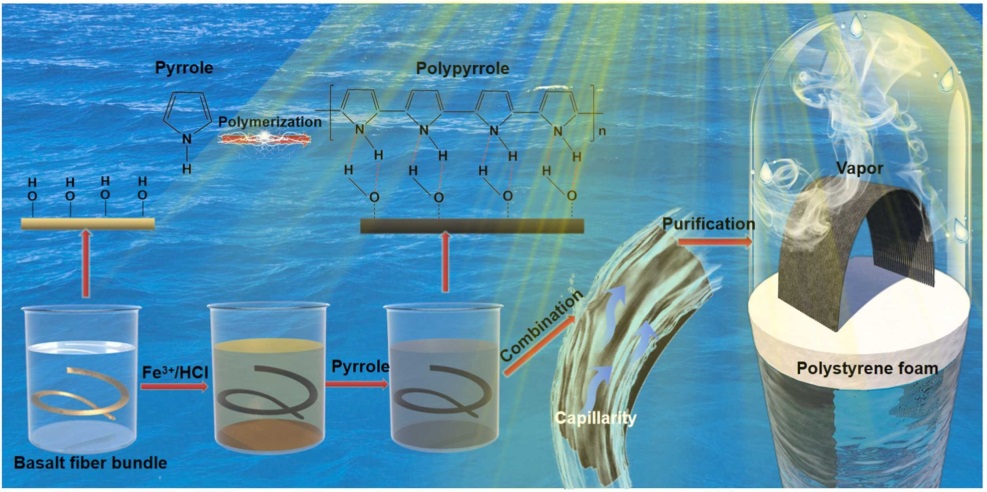In the face of the global crisis of fresh water shortage, there is an urgent need to develop novel desalination technologies to obtain clean drinking water from seawater or brackish water. Various desalination methods have been successfully applied in practical production, such as microfiltration, ultrafiltration, reverse osmosis, etc. These methods remove salts and other impurities from seawater through different mechanisms, contributing to alleviating freshwater shortages. However, these technologies still have limitations regarding energy consumption and environmental hazards. In search of a more sustainable solution, seawater desalination using solar energy is on the rise. This technology converts seawater into steam through solar thermal conversion to get fresh water, which features low energy consumption and environmentally friendly characteristics, thus attracting wide attention.
Recently, a research group from Xinjiang Technical Institute of Physics & Chemistry, Chinese Academy of Sciences, designed a 3D arched seawater desalination evaporator by adopting basalt fiber. By surface modification with polypyrrole, the light-trapping ability of basalt fiber was greatly enhanced, thus promoting efficient seawater evaporation. As for the evaporator structure, the basalt fiber bundles can form a unique 3D interconnected water transport channel offering a remarkable capillary effect, ensuring adequate water supply during the desalination and promoting the self-cleaning ability of the solar evaporator. The 3D arched evaporator was endowed with elevated water transport capacity and suppressed heat conduction loss. The evaporation rate at standard sunlight irradiation reached 3.61?kg/m2/h, much higher than the evaporation rate of the 2D evaporator (1.68 kg/m2/h) counterpart. The evaporator also performed well in long-term outdoor evaporation experiments, with a daily water supply of 18.80 kg/m2. In addition, the evaporator also shown excellent resistance to seawater corrosion and salt fouling. The self-cleaning behavior of the evaporator can be explained by the Marangoni effect: the heat-driven Marangoni flow can accelerate the internal water circulation within the material and avoided the deposition of salt ions on the evaporation interface. In conclusion, the development of the 3D solar evaporator proposed in this paper makes efficient solar desalination possible while effectively avoiding the salt blockage, which provides a new sustainable solution for the desalination industry to meet the growing global demand for freshwater resources.
This research finding was published on Colloids and Surfaces A: Physicochemical and Engineering Aspects.
Article link:https://doi.org/10.1016/j.colsurfa.2024.135035

Figure 1 Preparation of solar evaporator using basalt fiber and schematic diagram of seawater desalination process
